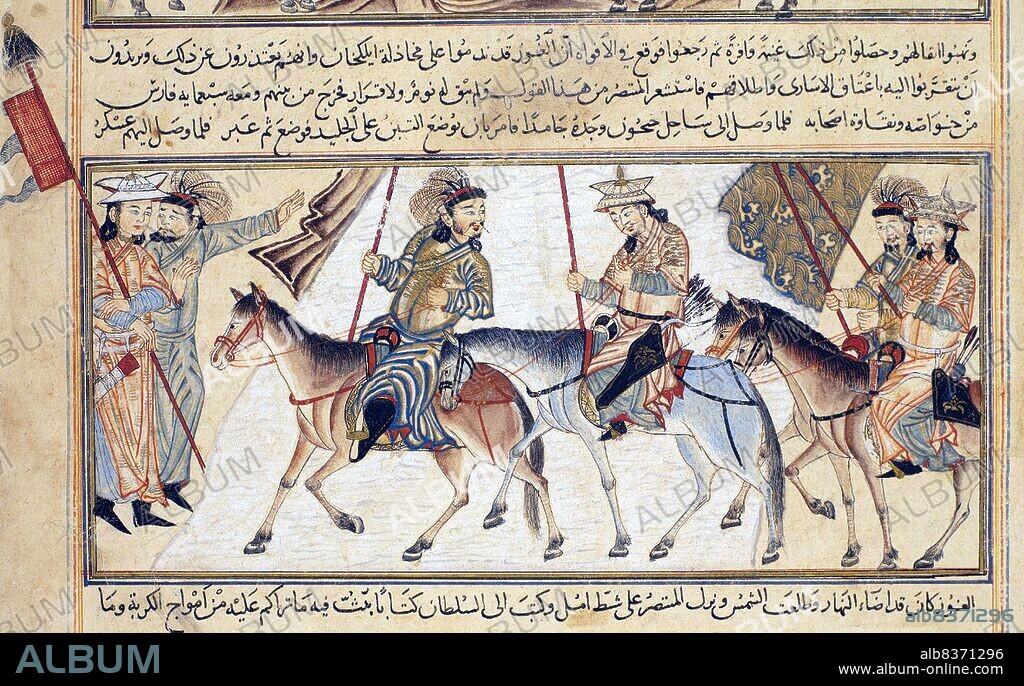alb8371296
Iran / Persia: The Samanid king Ismail Muntasir ibn Nuh II (died 1005) crossing the frozen Jayhun River (Amu Darya) in Transoxiana (Uzbekistan), from Rashid Al-Din, 'History of the World', c. 1306-1311 CE

|
Add to another lightbox |
|
Add to another lightbox |



Buy this image.
Select the use:

Title:
Iran / Persia: The Samanid king Ismail Muntasir ibn Nuh II (died 1005) crossing the frozen Jayhun River (Amu Darya) in Transoxiana (Uzbekistan), from Rashid Al-Din, 'History of the World', c. 1306-1311 CE
Caption:
The Samanid dynasty, also known as the Samanid Empire, or simply Samanids (819999), was a Sunni Persian Empire in Central Asia, named after its founder Saman Khuda, a landowner from Balkh, who converted to Islam despite being from Zoroastrian nobility.
. It was a native Persian dynasty in Greater Iran and Central Asia after the collapse of the Sassanid Persian empire caused by the Arab conquest.
. Isma'il Muntasir attempted to resurrect the Samanid state in Transoxiana and eastern Iran (10001005). He was the son of Nuh II.
. It was a native Persian dynasty in Greater Iran and Central Asia after the collapse of the Sassanid Persian empire caused by the Arab conquest.
. Isma'il Muntasir attempted to resurrect the Samanid state in Transoxiana and eastern Iran (10001005). He was the son of Nuh II.
Credit:
Album / Universal Images Group / Pictures From History
Releases:
Model: No - Property: No
Rights questions?
Rights questions?
Image size:
5100 x 3151 px | 46.0 MB
Print size:
43.2 x 26.7 cm | 17.0 x 10.5 in (300 dpi)
Keywords:
1005 CE • 1306 CE • 1306-1311 CE • 1311 CE • AMU DARYA • ANT. OR.: IRAN • ART • ARTS • ASIA • ASIAN • HISTORY OF THE WORLD • IRAN • IRANIAN • ISLAM • ISLAMISM • ISMAIL MUNTASIR IBN NUH • ISMAIL MUNTASIR • JAMI AL TAWARIKH • JAYHUN RIVER • JAYHUN • KING • LEGEND • MUSLIM WORLD • MUSLIM • MYTH: PERSIAN • OXUS • PAINT • PAINTING • PAINTINGS • PERSIA • PERSIAN ART • PERSIAN MYTH • PERSIAN • RASHID AL DIN HAMADANI • RASHID AL DIN • RASHID AL-DIN • RELIGION • SAMANID • SILK ROAD • SILK ROUTE • TRANSOXIANA • UZBEK • UZBEKISTAN
 Pinterest
Pinterest Twitter
Twitter Facebook
Facebook Copy link
Copy link Email
Email
